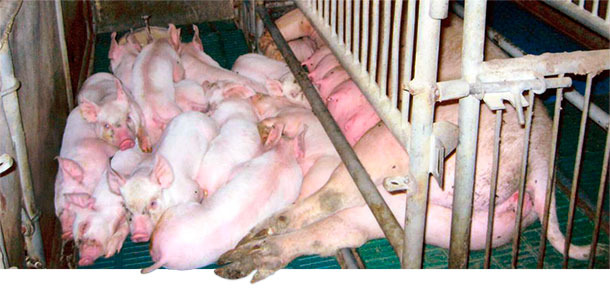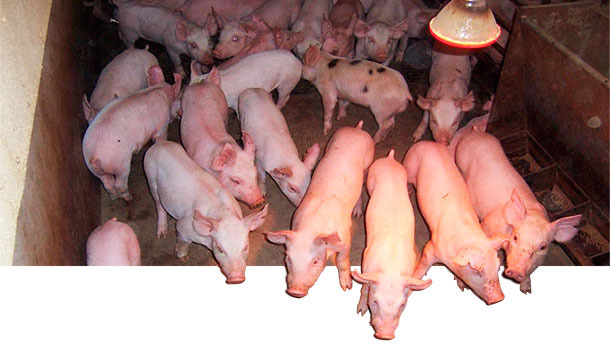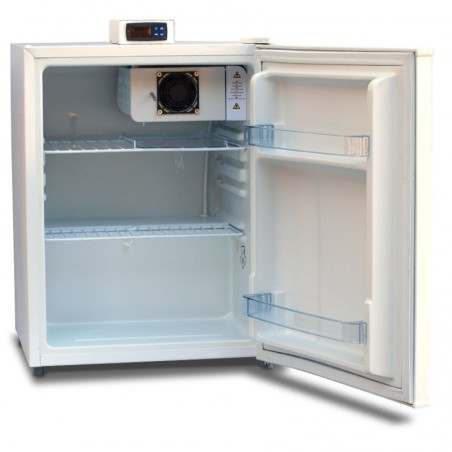Pig breeding and genetic programmes aim to increase the overall potential for better performance and profitability. They do this by harnessing the minimisation of inbreeding, maximising heterosis, competitive testing, selection using BLUP and the utilisation of genomic technologies. As a result, typical annual genetic improvements of 1.5 - 2.0% are achievable. This success story simply depends on two factors, as shown in the equation below:
R = S x h²

Where: R = Response to selection (per generation)
S = Selection differential
h² = Heritability

Figure 1. Most reproductive traits have low heritability, so require selection using BLUP.
The selection differential is the difference in the performance of selected animals for the next generation compared with all their contemporaries. Most of these contemporaries will be culled supporting the old farmers rule that genetic improvement is ‘all about culling the inferior animals in a population’.
To understand the concept of heritability it is important to look at the phenotype and genotype of an individual pig. As explained in a previous article (Genetic Resistance to Disease – An Introduction) the performance and conformation of the pig (the phenotype) depend on the combined effects of its genetic make-up (the genotype), which is mostly fixed at conception, and the environment, which includes health, nutrition, management, housing, climate, etc.
Phenotype = Genotype + Environment
Environment = Feeding + Health + Housing + Management
Phenotype = Genotype + (Feeding + Housing + Management + Environment)
Heritability may be simply defined (see the Technical Note at the end for a more refined definition) as the degree to which a given trait is controlled by inheritance. Put another way, heritability may be defined as the percentage of the phenotype under genetic control, so that:
Heritability = (Genotype/Phenotype) x 100
Because an understanding of heritability is so important in predicting future genetic gains, pig researchers around the world have undertaken numerous trials in a range of breeds to establish estimates for many traits. The Tables below summarise the average heritability (shown as a %) based on some of the reports in the scientific literature:

Boar Traits
| Testis size | 35 |
| Semen volume | 22 |
| Sperm motility | 15 |
| Libido | 15 |
Female Traits
| Age at puberty | 33 |
| Ovulation rate | 32 |
| Prenatal piglet survival | 15 |
| Number born | 11 |
| Number born alive | 9 |
| Number weaned | 7 |
| Piglet survival to weaning | 5 |
| Litter weight at birth | 27 |
| Litter weight at 21 days | 19 |
| Weaning to oestrus | 23 |

Figure 2. Growth and finisher pig traits are moderately heritable.
Grower/Finisher
| Growth rate | 31 |
| Feed intake | 27 |
| Feed conversion | 30 |
| Lean growth | 37 |
| Lean feed conversion | 31 |
| Ultrasonic backfat | 40 |

Figure 3. Many carcase and meat traits have moderate to high heritability and are easily improved by selection.
Carcase/Meat/Eating quality traits
| Slaughter-line backfat | 43 |
| Loin area | 46 |
| Carcase length | 57 |
| Lean % | 48 |
| pH1 (pH 45 minutes post-mortem) | 16 |
| pHu (pH 24 hours post-mortem) | 27 |
| Meat colour | 28 |
| Water-holding/Drip | 15 |
| % lipid in meat | 48 |
| % linoleic acid in fat | 55 |
| Backfat firmness | 42 |
| Tenderness (by instrument) | 28 |
| Tenderness (by taste panel) | 33 |
| Flavour (by taste panel) | 9 |
| Juiciness (by taste panel) | 12 |
| Overall acceptance (by taste panel) | 23 |
Note that the higher the heritability, the greater the potential for genetic progress. Thus, traits of high or moderate heritability are easily improved by testing and selection. However, for traits of low heritability, improvements come from exploiting hybrid vigour (heterosis) and by the use of BLUP.
Technical note:
A technical definition of heritability is that it is the proportion of total phenotypic variation that is attributable to additive genetic variation.
The concept of splitting an individual animal’s phenotype into genotype and environment can be extended to groups of animals. Thus, the total variation observed (the phenotypic variance) can be divided between the variation in the genotype of the animals (genetic variance) and the variation in the environment (environmental variance). Geneticists further split the genetic variance between the variance in breeding value (called the additive genetic variance) and the variance due to non-additive effects (resulting from dominance and epistasis). Genes are inherited in pairs of alleles – one from the sire and one from the dam. Examples of dominance are well known – an example is the stress/halothane gene, where the dominant allele always is expressed even when a pig has only one copy of the allele. Thus, heterozygotes do not exhibit the classic stress syndrome. Epistasis occurs when the presence of one allele affects the expression of an allele at a different site on the chromosome. These effects have not been widely researched to date but it is known that they influence a wide range of traits, particularly for reproductive, carcase composition and meat quality traits.





